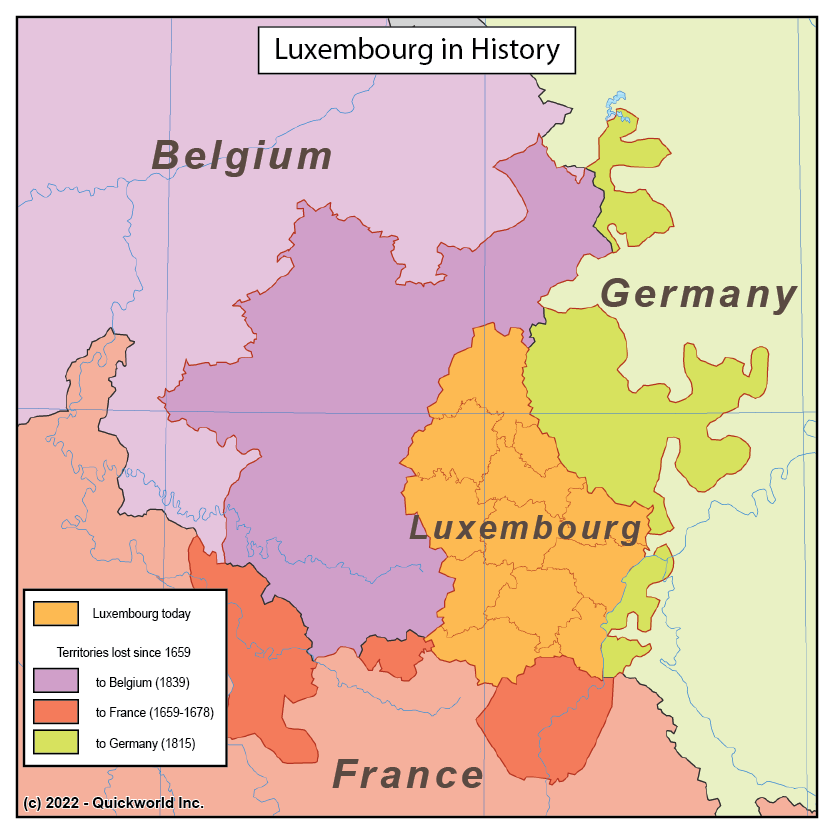The territorial formation of Luxembourg is interesting. the Duchy (later Grand-Duchy) of Letzenburg (Luxembourg is the French version of that) was centered around the fortress of the same name, and was at some point one of the richest duchies of the Holy Roman Empire.
France annexed the southern city of Thionville in 1659, and Luxembourg fell under the control of the Austrians along with its neighbours Flanders and Brabant, in 1713. During the French Revolution, Luxembourg became a French district, the "département des Forêts". After the Congress of Vienna of 1815, Prussia annexed one third of Luxembourg and the remaining Grand-Duchy's status was unclear, because it was under the sovereignty of the Netherlands but was also part of the German Confederation.
The secession of Belgium from the Netherlands in 1830 brought more confusion, as Belgium considered Luxembourg as Belgian territory, while the Netherlands and Prussia had a different view. The matter was resolved in 1839, with a third partition of the Grand-Duchy. The Western half, mostly French-speaking, became the Belgian province of Luxembourg, while the Grand-Duchy became an independent nation, part of the German customs union.
More on Luxembourg
Luxembourg in 1839


